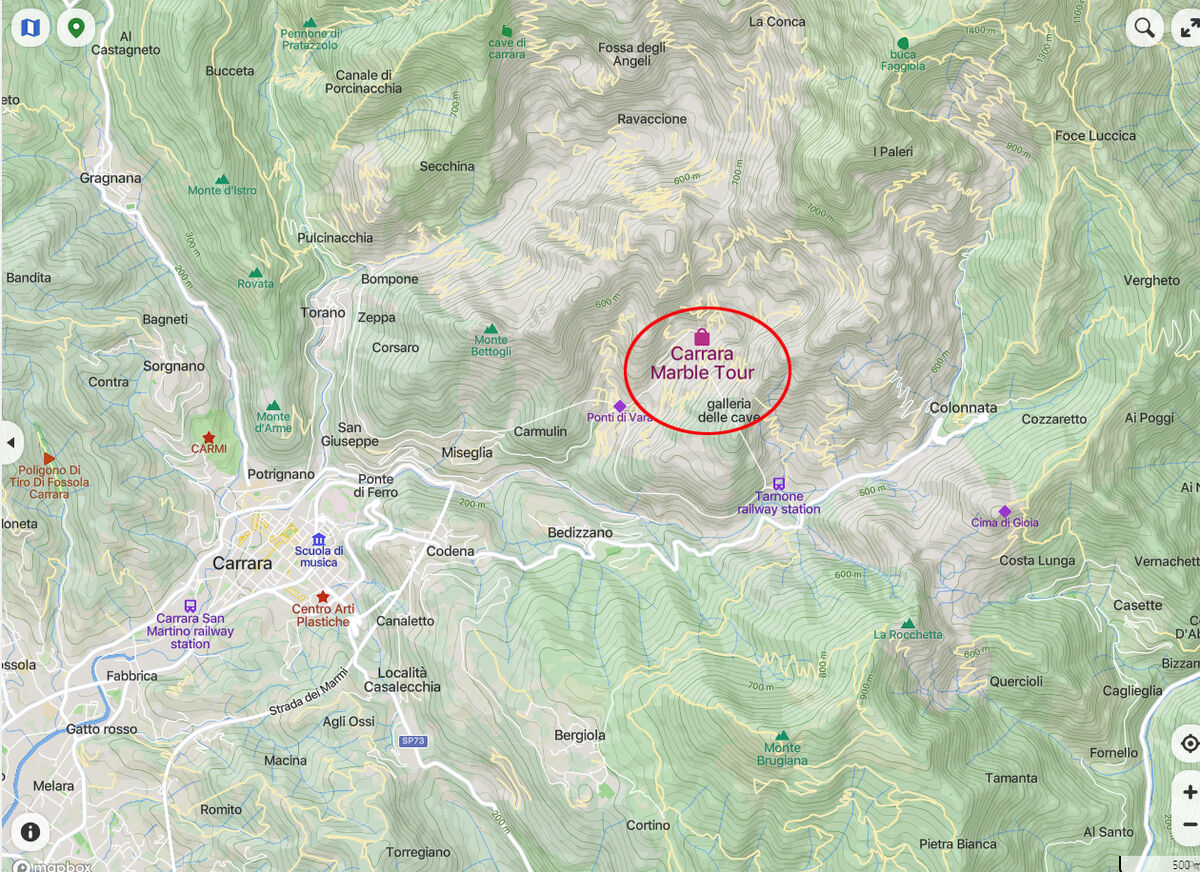Italy: Tuscany - The Carrara Marble Quarries Part 2
Oct 2, 2023 15:37:10 #
It was fascinating to watch the quarrymen cut the marble slabs and blocks and we got a detailed lecture on the technique used. Most marble in Carrara is mined using the diamond wire technique. Here's an article about the techniques used throughout the years at this world-famous quarry and some additional images.
Marble: the quarrying techniques
BY SIMOADMIN FEBRUARY 22, 2018
Since ancient times, there have been different methods to mine marble from quarries, though the most substantial development of the mining techniques has occurred over the last one hundred-one hundred fifty years. The “cutting” phase is the one in which the marble “bench wall” (the part from which the blocks will be obtained) is physically separated from the mountain wall. Before that can be done, the wall must be adequately prepared to reduce waste to the minimum and to let the “development” of the quarry (which must follow a precise scheme according to the typology of the quarry) continue in a regular way. A precise delimitation is done according to the thickness of the wall, the direction the cut must have, the distribution of eventual natural cracks of the rock, the block output the bench wall can give, the continuity of colour and pattern of the marble.
In ancient times, during the Roman age, when the exploitation of Carrara quarries began, the cutting was done with manual methods which implied the separation of the marble bench wall from the mountain through fracture. The oldest technique was the “tagliata”: the quarrymen, through the use of chisels, created cracks in the rock, especially where they found pre-existing cracks or chinks, obtaining a V cutting line. Then the crack was forced with metal elements (iron wedges), in order to obtain a deep one that caused the separation of the marble bench wall. Another technique, a rougher one, involved the use of wood wedges: wood wedges were placed in the cutting line and then wetted with water. The expansion of the wood had the wedges swollen, breaking the marble and separating the bench wall.
Manual techniques were used for centuries, until the invention of the gunpowder, which was largely used in the marble extraction. The quarrying through mines, massively used until the beginning of the 20th century, permitted the separation of enormous portions of material in a relatively short time: the “varata” technique (the name used for the separation of large bench walls by using mines), dating back to the 19th century, ended up becoming a spectacular event to be told, according to the magnitude it might reach. For this reason, Gabriele D’Annunzio was invited by a former schoolmate of the Cicognini High School of Prato, the quarry owner Giovanni Cucchiari, to see the “explosion of a mine” that had been preparing in Colonnata.
To prepare the varata several deep holes in the marble were made. Inside those holes, the mine was placed: it consisted of an explosive charge connected to a detonator. The section of the hole which remained empty (“borraggio”) was filled up with sand or grinded rock, in order to contain the impact of the explosion. A trumpet signal warned the quarrymen to take shelter, then the charge was ignited and it deflagrated. The bench wall slid as it separated from the mountain, permitting quarrymen to divide it into blocks.
The problem of the varata was that there was a great waste of material: more controlled explosions were adopted then, with charges placed to obtain a more precise separation of marble blocks (for example through the use of linear charges). The explosives are still used today, when it is needed to make a quarrying area safe by removing some material that may implicate risks, or to facilitate the separation of bench walls that were already outlined with modern techniques.
These are essentially mechanical methods and were introduced at the beginning of the 20th century, though some experimentations had already been conducted at the end of the previous century. The new methods permitted abandoning the techniques of fracture or explosion separation and started the “taglio” (cutting) one. It allowed quarrymen to obtain bench walls which are outlined very precisely and with the lowest waste of material. The first of those methods was the cutting with helicoidal wire: it was a wire with a diameter of about 5 millimetres with steel wires intertwined with it to shape a helix. In the grooves of the wire, a mixture of water and abrasive materials was poured: the wire, connected to a motor plant, was tensed up and then passed (the speed of the most innovative plants might reach fourteen metres per second) through the marble along the cutting line. The use of helicoidal wire spread rapidly, also because it permitted cutting of different type, length and direction.
The most modern method, as well as the most spread one in nowadays quarries, is the cutting with diamond wire which was introduced at the end of the 70s in Carrara’s quarries (though experimentations started in the previous decade). The principle is the same of the helicoidal wire method, but small steel cylinders are inserted on it; they are called “pearls” and are covered with layers of industrial use diamond, material that gives more efficient results, thanks to its hardness.
There are other cutting methods, though they are less spread: the chain cutting is done through the use of machines that have toothed chains passing through the rock, whereas the continuous coring method is done through parallel holes in the bench wall which create a continuous crack that permits the separation. There are also disc cutters that cut the marble with toothed discs and water jet cutters which use a high speed and high pressure water jet to cut.
https://www.carraramarbletour.it/en/culture/il-marmo-le-tecniche-di-escavazione/
For more images of the Tuscan countryside between Florence and Carrara as well as Carrara Town, the road up the mountain, and the quarry tour, please see my previous posts:
https://www.uglyhedgehog.com/t-787003-1.html#14175832
https://www.uglyhedgehog.com/t-787105-1.html
https://www.uglyhedgehog.com/t-787428-1.html
https://www.uglyhedgehog.com/t-787548-1.html#14186607
https://www.uglyhedgehog.com/t-787640-1.html
https://www.uglyhedgehog.com/t-787821-1.html
https://www.uglyhedgehog.com/t-787902-1.html#14194111
I hope you enjoy these!
Mark
Marble: the quarrying techniques
BY SIMOADMIN FEBRUARY 22, 2018
Since ancient times, there have been different methods to mine marble from quarries, though the most substantial development of the mining techniques has occurred over the last one hundred-one hundred fifty years. The “cutting” phase is the one in which the marble “bench wall” (the part from which the blocks will be obtained) is physically separated from the mountain wall. Before that can be done, the wall must be adequately prepared to reduce waste to the minimum and to let the “development” of the quarry (which must follow a precise scheme according to the typology of the quarry) continue in a regular way. A precise delimitation is done according to the thickness of the wall, the direction the cut must have, the distribution of eventual natural cracks of the rock, the block output the bench wall can give, the continuity of colour and pattern of the marble.
In ancient times, during the Roman age, when the exploitation of Carrara quarries began, the cutting was done with manual methods which implied the separation of the marble bench wall from the mountain through fracture. The oldest technique was the “tagliata”: the quarrymen, through the use of chisels, created cracks in the rock, especially where they found pre-existing cracks or chinks, obtaining a V cutting line. Then the crack was forced with metal elements (iron wedges), in order to obtain a deep one that caused the separation of the marble bench wall. Another technique, a rougher one, involved the use of wood wedges: wood wedges were placed in the cutting line and then wetted with water. The expansion of the wood had the wedges swollen, breaking the marble and separating the bench wall.
Manual techniques were used for centuries, until the invention of the gunpowder, which was largely used in the marble extraction. The quarrying through mines, massively used until the beginning of the 20th century, permitted the separation of enormous portions of material in a relatively short time: the “varata” technique (the name used for the separation of large bench walls by using mines), dating back to the 19th century, ended up becoming a spectacular event to be told, according to the magnitude it might reach. For this reason, Gabriele D’Annunzio was invited by a former schoolmate of the Cicognini High School of Prato, the quarry owner Giovanni Cucchiari, to see the “explosion of a mine” that had been preparing in Colonnata.
To prepare the varata several deep holes in the marble were made. Inside those holes, the mine was placed: it consisted of an explosive charge connected to a detonator. The section of the hole which remained empty (“borraggio”) was filled up with sand or grinded rock, in order to contain the impact of the explosion. A trumpet signal warned the quarrymen to take shelter, then the charge was ignited and it deflagrated. The bench wall slid as it separated from the mountain, permitting quarrymen to divide it into blocks.
The problem of the varata was that there was a great waste of material: more controlled explosions were adopted then, with charges placed to obtain a more precise separation of marble blocks (for example through the use of linear charges). The explosives are still used today, when it is needed to make a quarrying area safe by removing some material that may implicate risks, or to facilitate the separation of bench walls that were already outlined with modern techniques.
These are essentially mechanical methods and were introduced at the beginning of the 20th century, though some experimentations had already been conducted at the end of the previous century. The new methods permitted abandoning the techniques of fracture or explosion separation and started the “taglio” (cutting) one. It allowed quarrymen to obtain bench walls which are outlined very precisely and with the lowest waste of material. The first of those methods was the cutting with helicoidal wire: it was a wire with a diameter of about 5 millimetres with steel wires intertwined with it to shape a helix. In the grooves of the wire, a mixture of water and abrasive materials was poured: the wire, connected to a motor plant, was tensed up and then passed (the speed of the most innovative plants might reach fourteen metres per second) through the marble along the cutting line. The use of helicoidal wire spread rapidly, also because it permitted cutting of different type, length and direction.
The most modern method, as well as the most spread one in nowadays quarries, is the cutting with diamond wire which was introduced at the end of the 70s in Carrara’s quarries (though experimentations started in the previous decade). The principle is the same of the helicoidal wire method, but small steel cylinders are inserted on it; they are called “pearls” and are covered with layers of industrial use diamond, material that gives more efficient results, thanks to its hardness.
There are other cutting methods, though they are less spread: the chain cutting is done through the use of machines that have toothed chains passing through the rock, whereas the continuous coring method is done through parallel holes in the bench wall which create a continuous crack that permits the separation. There are also disc cutters that cut the marble with toothed discs and water jet cutters which use a high speed and high pressure water jet to cut.
https://www.carraramarbletour.it/en/culture/il-marmo-le-tecniche-di-escavazione/
For more images of the Tuscan countryside between Florence and Carrara as well as Carrara Town, the road up the mountain, and the quarry tour, please see my previous posts:
https://www.uglyhedgehog.com/t-787003-1.html#14175832
https://www.uglyhedgehog.com/t-787105-1.html
https://www.uglyhedgehog.com/t-787428-1.html
https://www.uglyhedgehog.com/t-787548-1.html#14186607
https://www.uglyhedgehog.com/t-787640-1.html
https://www.uglyhedgehog.com/t-787821-1.html
https://www.uglyhedgehog.com/t-787902-1.html#14194111
I hope you enjoy these!
Mark
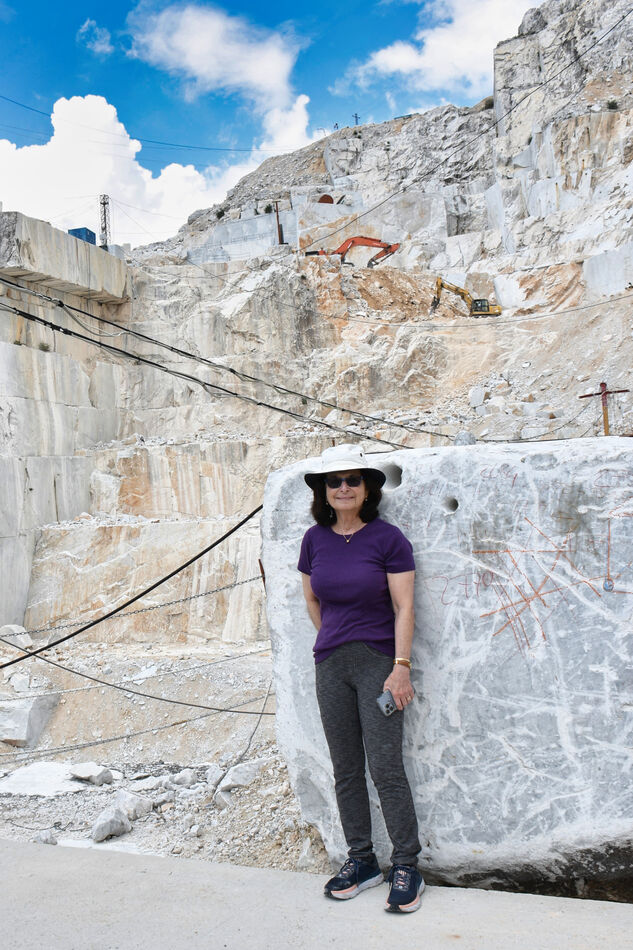
(Download)
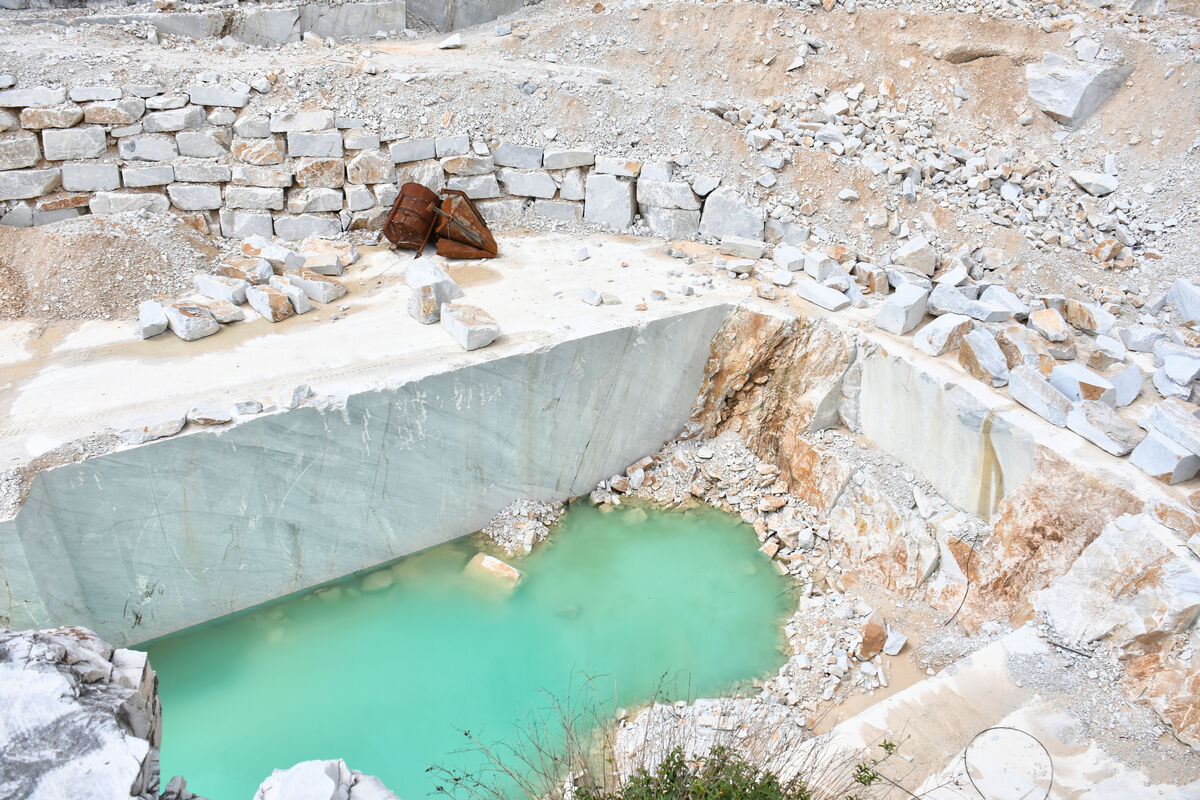
(Download)
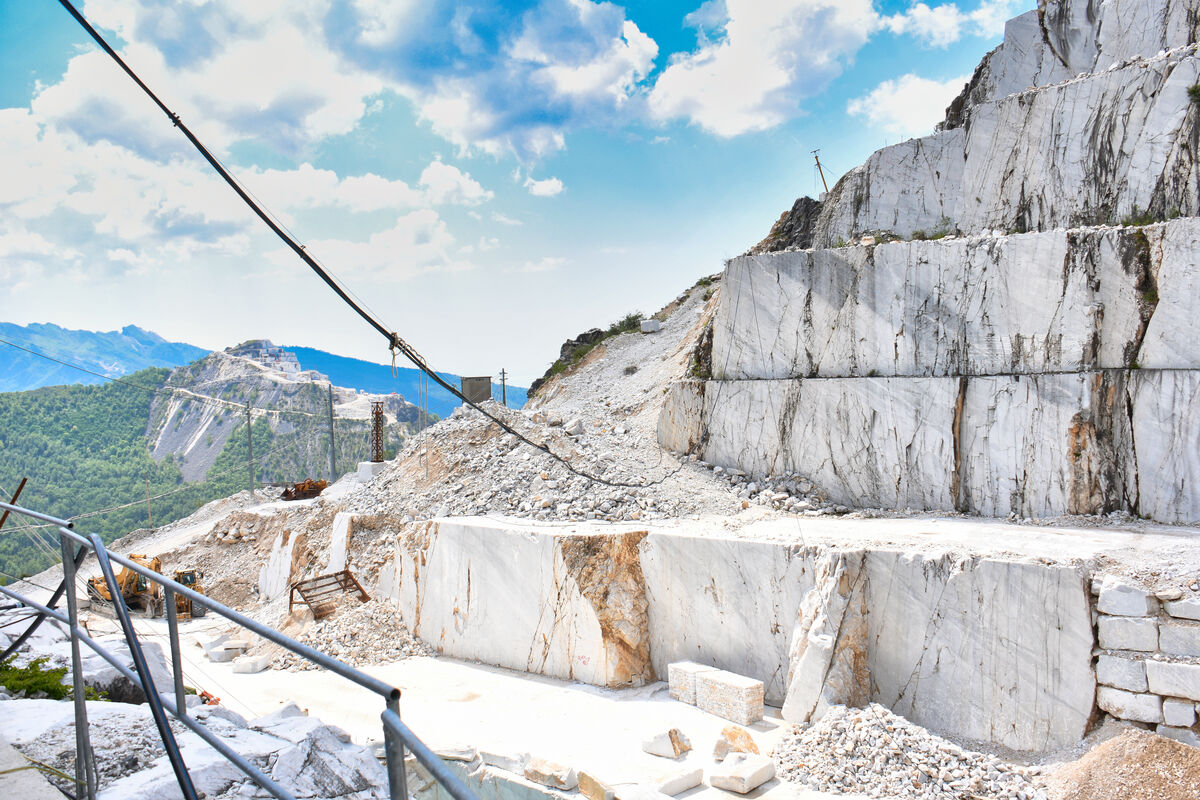
(Download)
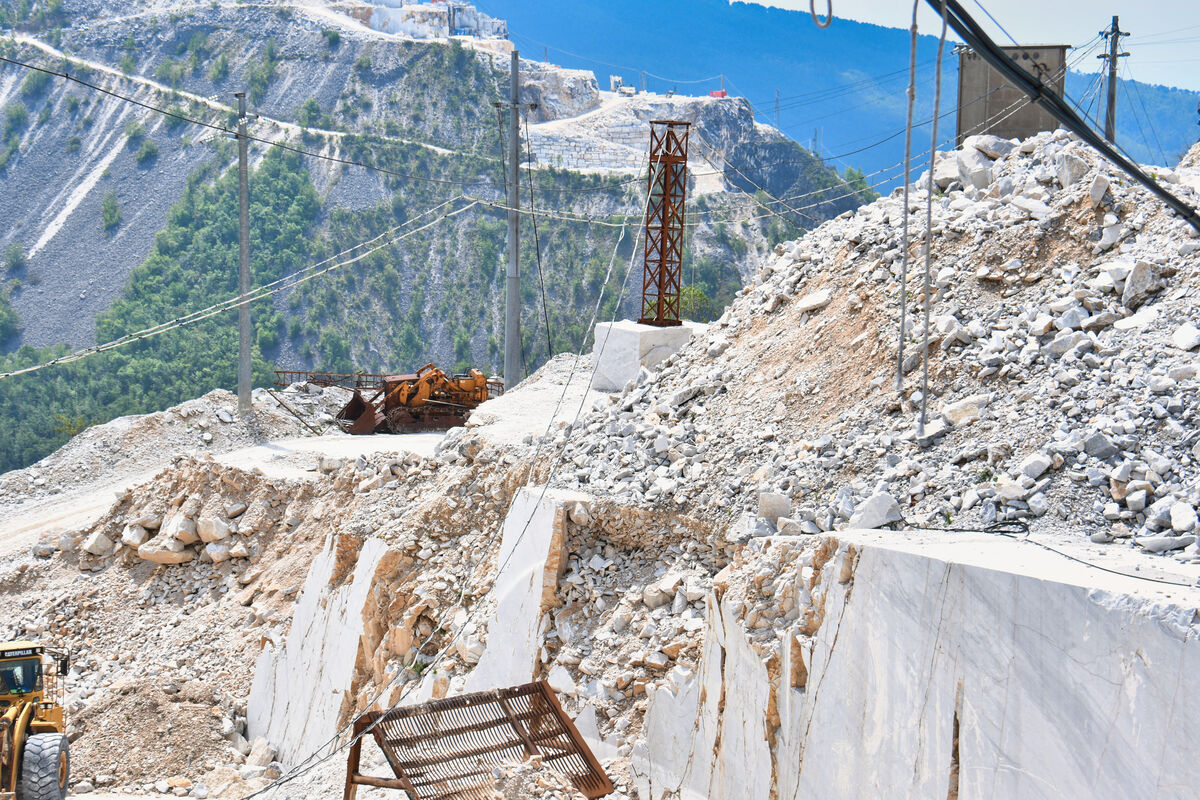
(Download)
The machine operator looks like he's dressed for a Sunday drive!
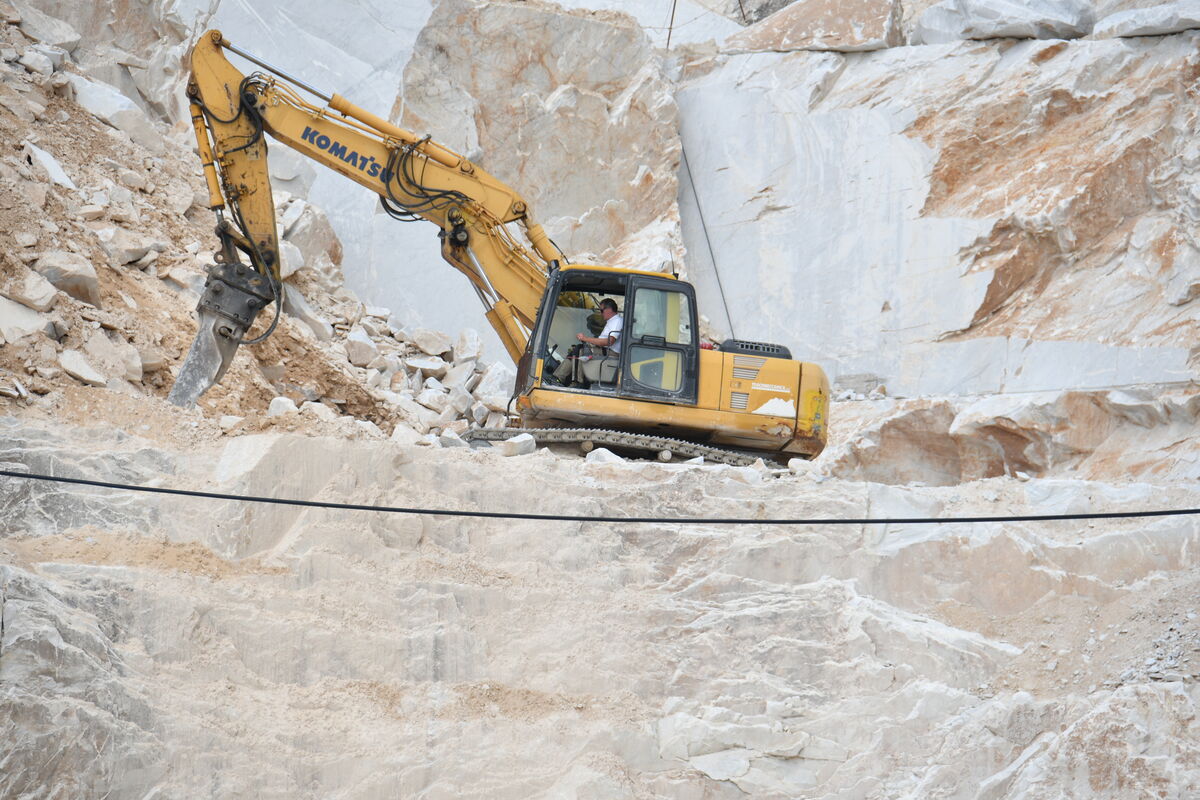
(Download)
Heidi lecturing on mining techniques with an example of the diamond wire at her feet
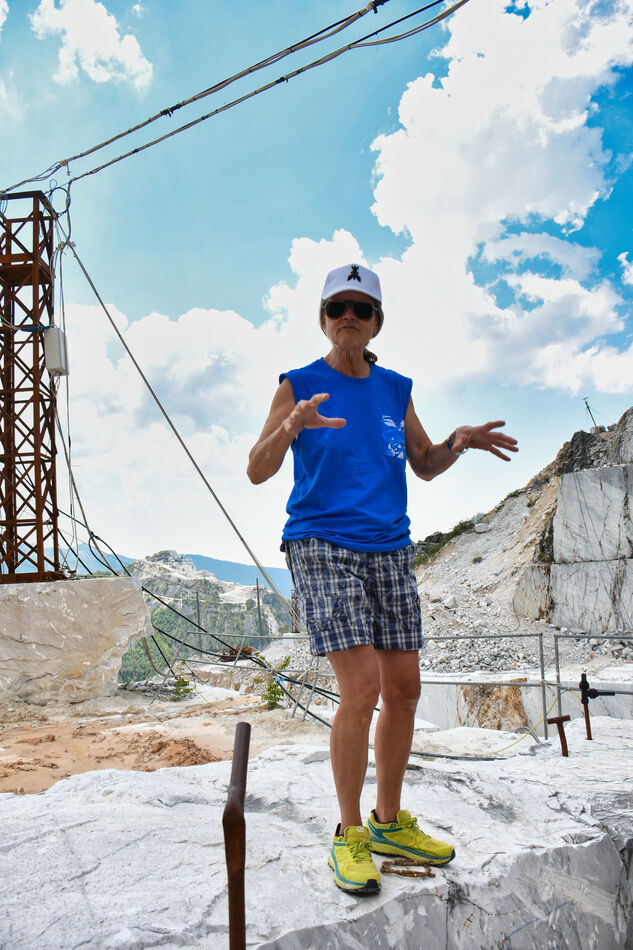
(Download)
The diamond wire is threaded through a hole at the top of the slab to be cut
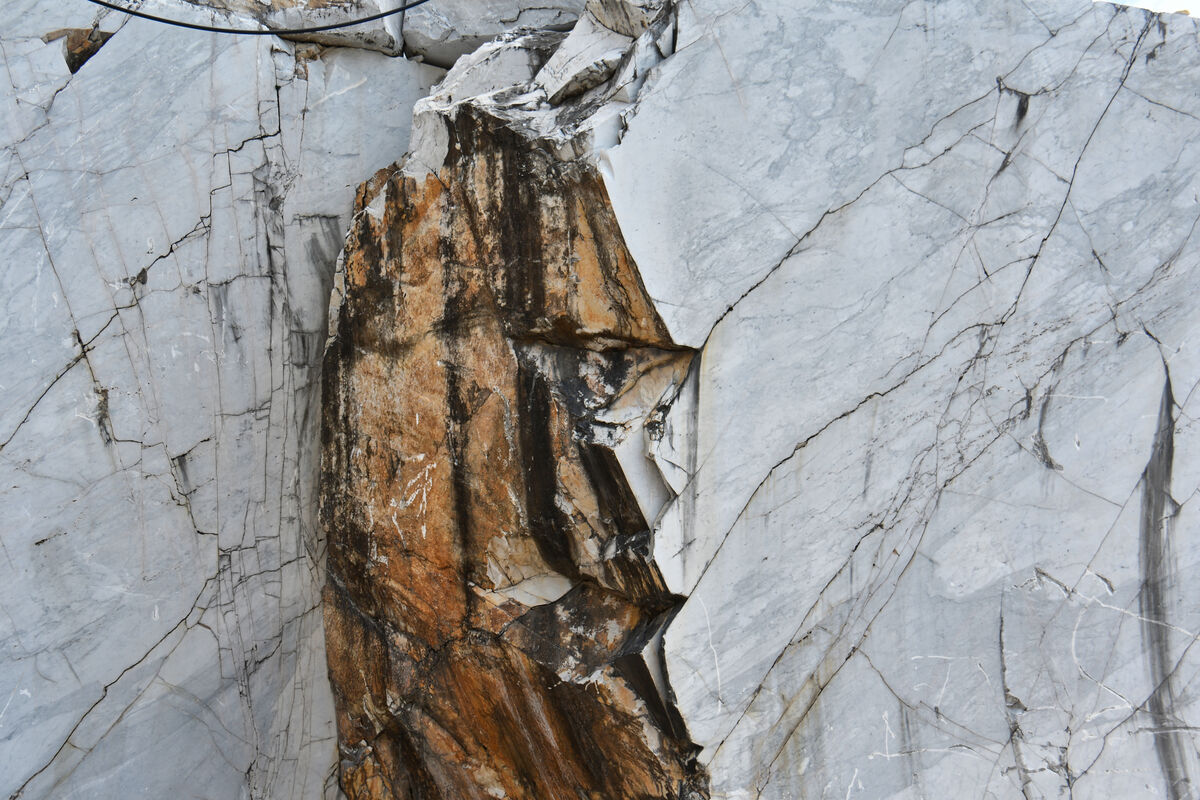
(Download)
A quarry across the valley
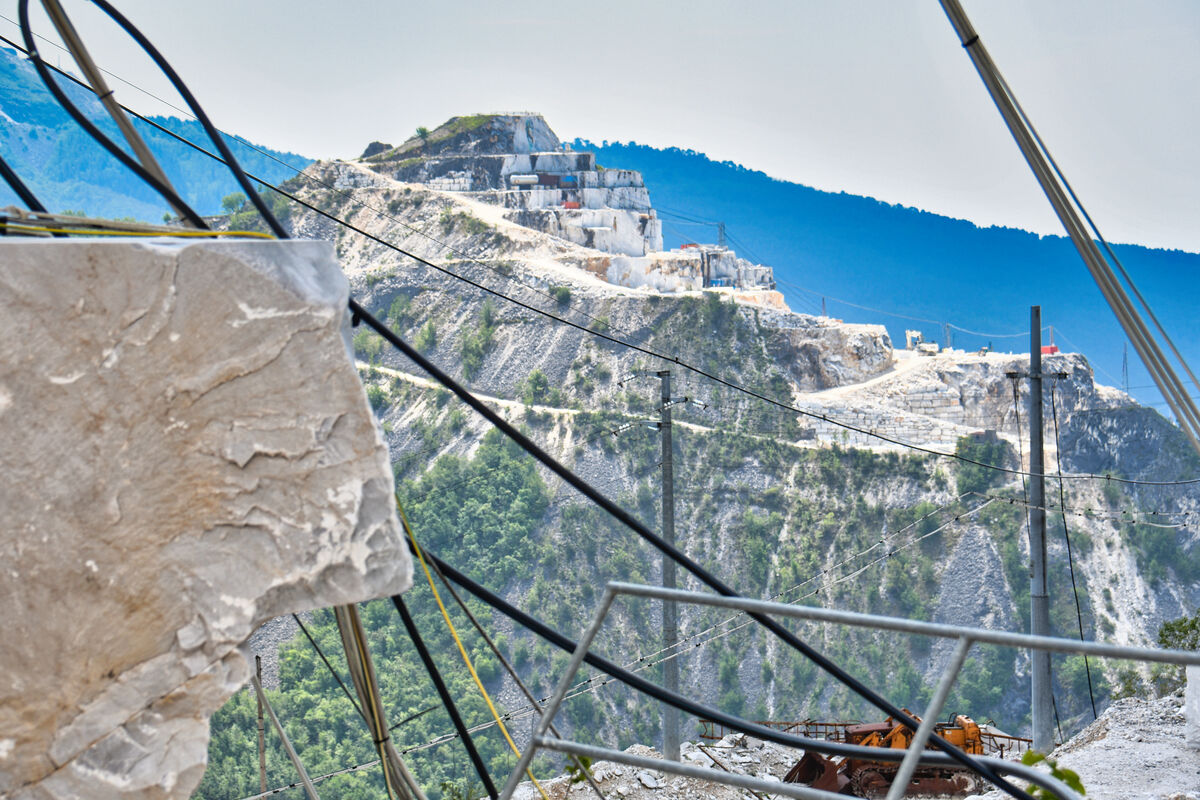
(Download)
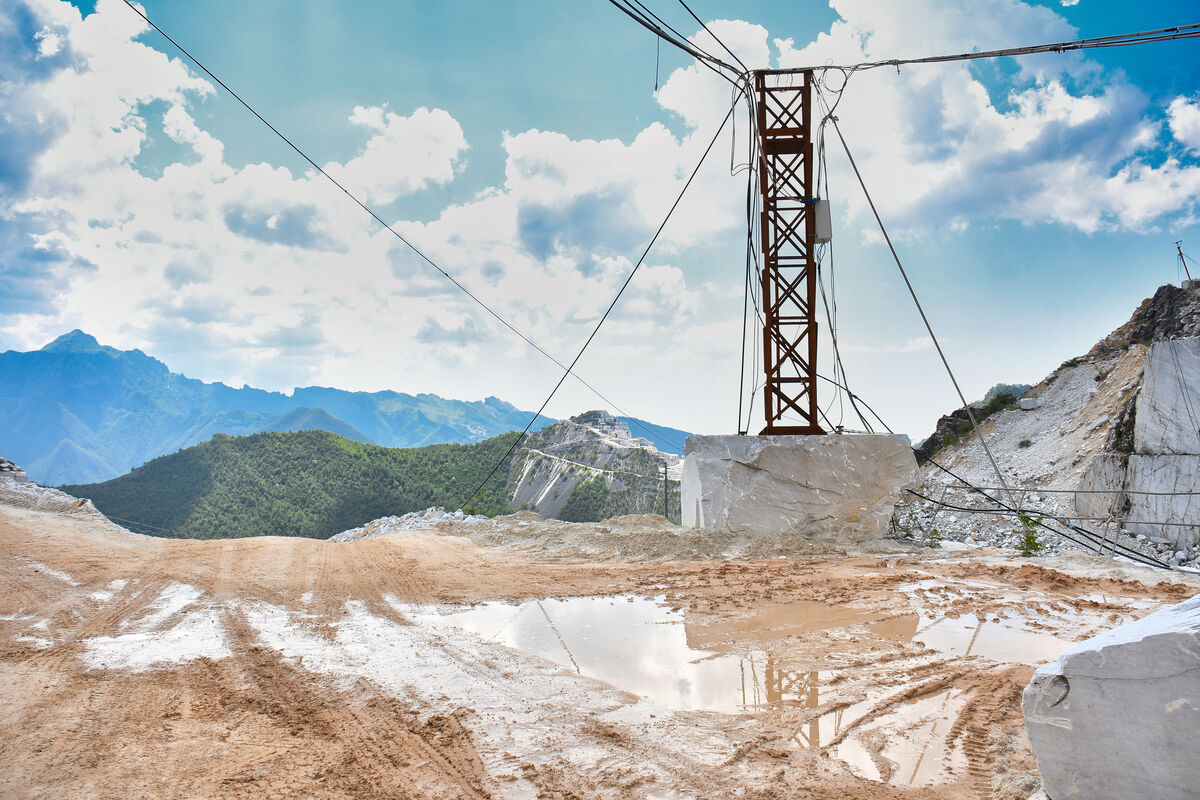
(Download)
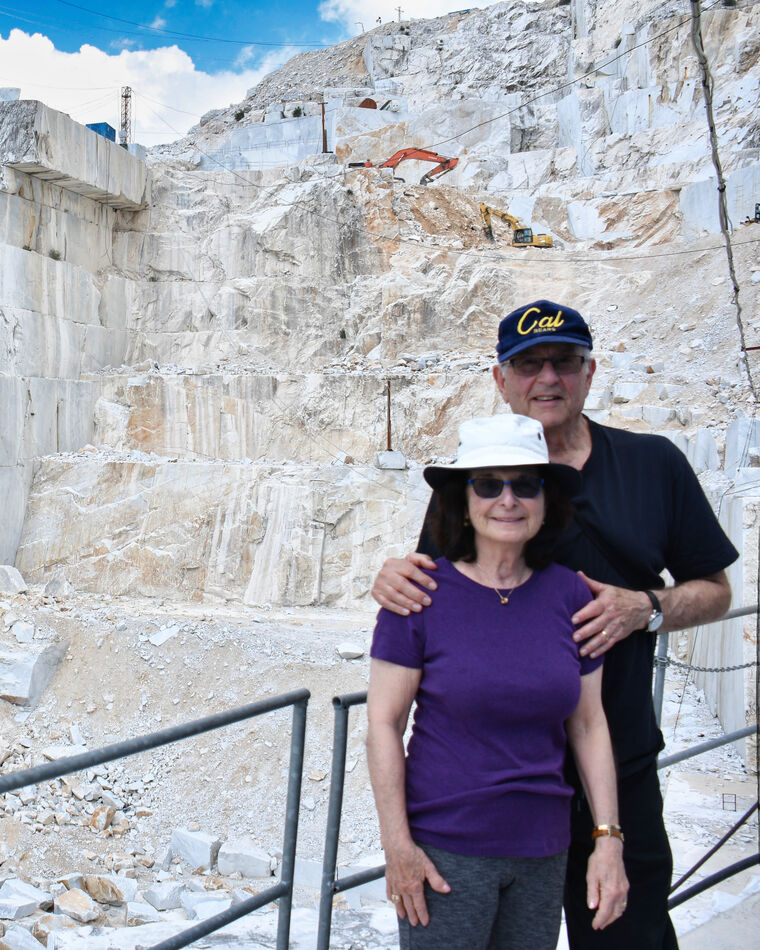
(Download)
Oct 2, 2023 15:40:39 #
Oct 2, 2023 16:29:18 #
srfmhg wrote:
It was fascinating to watch the quarrymen cut the ... (show quote)
More interesting info and shots Mark.



Oct 2, 2023 16:33:40 #
MosheR
Loc: New York City
srfmhg wrote:
Location Map:
Really interesting info and shots, Mark. And as I remarked in your previous post, your photography brings out an eerie beauty to what should not be beautiful at all.
Oct 2, 2023 17:21:35 #
Oct 2, 2023 17:52:24 #
bcheary wrote:
More interesting info and shots Mark. 





Thanks very much Brian.
Oct 2, 2023 17:53:05 #
MosheR wrote:
Really interesting info and shots, Mark. And as I remarked in your previous post, your photography brings out an eerie beauty to what should not be beautiful at all.
Thanks so much Mel. I appreciate that!
Oct 2, 2023 17:53:34 #
Oct 3, 2023 00:10:51 #
Oct 3, 2023 01:54:40 #
kpmac wrote:
That is one interesting place, Mark. Great job documenting it.
Thanks very much Ken.
Oct 3, 2023 07:04:09 #
Oct 3, 2023 08:01:48 #
Another wonderful Carrara set, Mark. Good use of your beautiful model to give perspective to the size of the marble blocks. Loved seeing the both of you in front of the mining scene. Very nicely done.
Oct 3, 2023 08:15:39 #
Oct 3, 2023 10:31:36 #
Oct 3, 2023 16:11:10 #
srfmhg wrote:
It was fascinating to watch the quarrymen cut the ... (show quote)
Incredible experience. Thanx for sharing your fun. Is alabaster mined in the same manner?
If you want to reply, then register here. Registration is free and your account is created instantly, so you can post right away.

